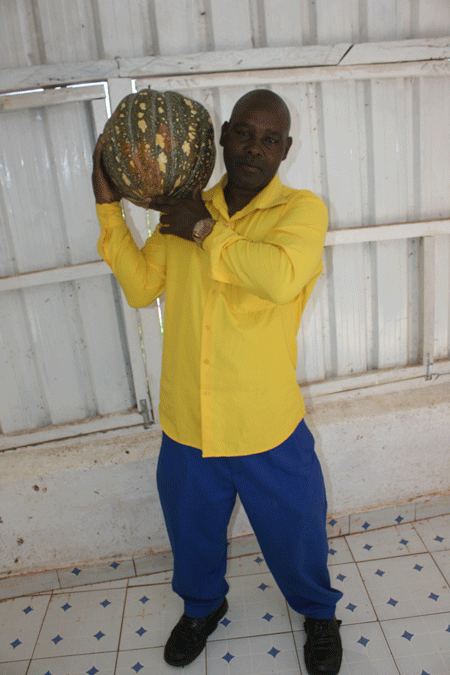
Value addition: Turning pumpkins into flour- Marenge Tamu
Opportunity is everywhere, it just needs you to spot it, take it and harness it to maximum benefit. This is the story of Joel Irungu. He has been selling herbal medicine for the past 20 years and while on his marketing trips to Uganda, he chanced upon pumpkins that were impressively bigger than normal.
He enquired where they originate from and where he can get the seeds. He was told that the seeds are from Israel. He bought a few, came back with them to Kenya and planted them. They delivered as promised with huge pumpkins some weighing up to 40kgs.
The people who sold him the seeds didn’t know their name so he decided to name them Israel Giant. The name was however rejected by the Kenya Bureau of Standards (KEBS) because it invokes the name of another country.
With this in mind, he decided to name the seeds Marenge Tamu and registered his company as Marenge Tamu Products Enterprises. ‘Marenge’ is the Kikuyu word for pumpkins while ‘Tamu’ is the Swahili word for sweet.
It is a relatively young company less than a year old and it has potential to grow into a conglomerate as he wants to set up a processing factory in every county. He is currently based in Kigetu-ini, Gaturi ward, Murang’a County where he has set up a pumpkin flour processing factory.
The processing factory is divided into five sections. Each section handles a specific task in the value chain. There is the splitting section, grinding section, drying section, second grinding section and packing section.
The splitting section has a marenge cutter machine that separates the pumpkin into six large pieces. These pieces are of the right size to fit into the intake of the first grinder.
The pieces are taken to the first grinder and cut into small tiny pieces the size of a pea. No part of the pumpkin is wasted. The peelings are good for fibre, the seeds are rich in zinc which is good for the libido.
The ground product is taken to the dryer to remove moisture. The dryer is a room with no windows except two small vents at the raft close to the roof. The idea is to keep the heat in the room. The room is heated using two external firewood ovens that are built into the wall of the room to deliver heat into the room.
Firewood is fed into the ovens from outside the room. The ground pumpkins are laid out onto perforated metal trays. The trays are then arranged in stacks that go up to the roof. The room has 6 stacks one on top the other and they carry enough produce for a 7 tonne lorry. It takes 2 hours with maximum heat to dry the pumpkins.
The fourth stage is a fine grinder. It grinds the pea-sized pumpkin bits into flour. There are three grinders in this room. They grind the pumpkins as well as groundnuts, wheat, cassava, sweet potatoes, bananas and arrow roots. All these are mixed with the pumpkin flour in varying portions.
The final stage is the packing section where the ground and mixed flour is packaged and sealed. The product is KEBS approved and is ready for sale in supermarkets because it has a barcode.
At the moment, they are selling 50gm packets at kshs. 100. Joel is planning on introducing the 1/2 kg, 1 kilo and 2 kg packets.
He conducts training for farmers and marketers. He also sells pumpkin seeds at 1 Shilling per seed. An acre can take up to 10,000 Shillings worth of seeds and each seed can produce a maximum of 20 pumpkins with the right care. They need to be sprayed every 14 days against fruit fly and blight. They take 3 months to mature.
Pumpkins are sold at Kshs. 50 per kg and a pumpkin can weigh up to 20kgs. Pumpkins can last for up to a year without going bad after harvesting as long as they are not damaged or the skin is not broken.

